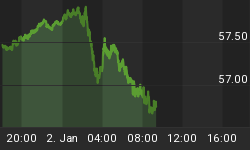Major Trend Changes are the Norm in the Month Of March for the S&P 500
For the past six years, major trend changes have started during the month of March, with several around the equinox. And it looks as though this has occurred once again this year, on March 7th, 2005. The decline since March 7th has been impulsive with considerable technical damage to the averages. While there will be bounces along the way, we believe a major trend change lower is underway, and the two and one-half year rally from October 2002 is over. One of the compelling arguments for a substantial long-term decline resuming from here is the comparison of past Bear market price action with the current pattern. Analogs measure investor psychology of the past, and offer a blueprint for likely behavior in the future.

The next chart compares the rise and fall of the S&P 500 index from 1998 to 2002 with the trend in prices since October 2002. The similitude is uncanny. It is suggesting that prices should have peaked in early March 2005, consistent with the March "turns" phenomenon, and that next is a longterm devastating decline.
We publish technical analysis newsletters of the major U.S. Equity, Bond, Commodity, Precious Metal, and Currency markets, using multiple tools simultaneously, including Elliott Wave Theory, Supply and Demand, Momentum Measures, Dow Theory, Chart Patterns, Cycles, Sentiment Measures, Fibonacci Ratio Measures for Price and Time turn targets, and Analogs of Current Price Behavior with the Past to name a few.
To Subscribe and receive access to these expanded newsletters, Trader’s Corner, and our Proprietary Short and Intermediate-term Technical Indicator Indices, I invite you to visit our website at www.technicalindicatorindex.com and simply click on the Subscribe Today! button.
"For God so loved the world,
that He gave His only begotten Son,
that whoever believes in Him should not perish,
but have eternal life."
John 3:16

















